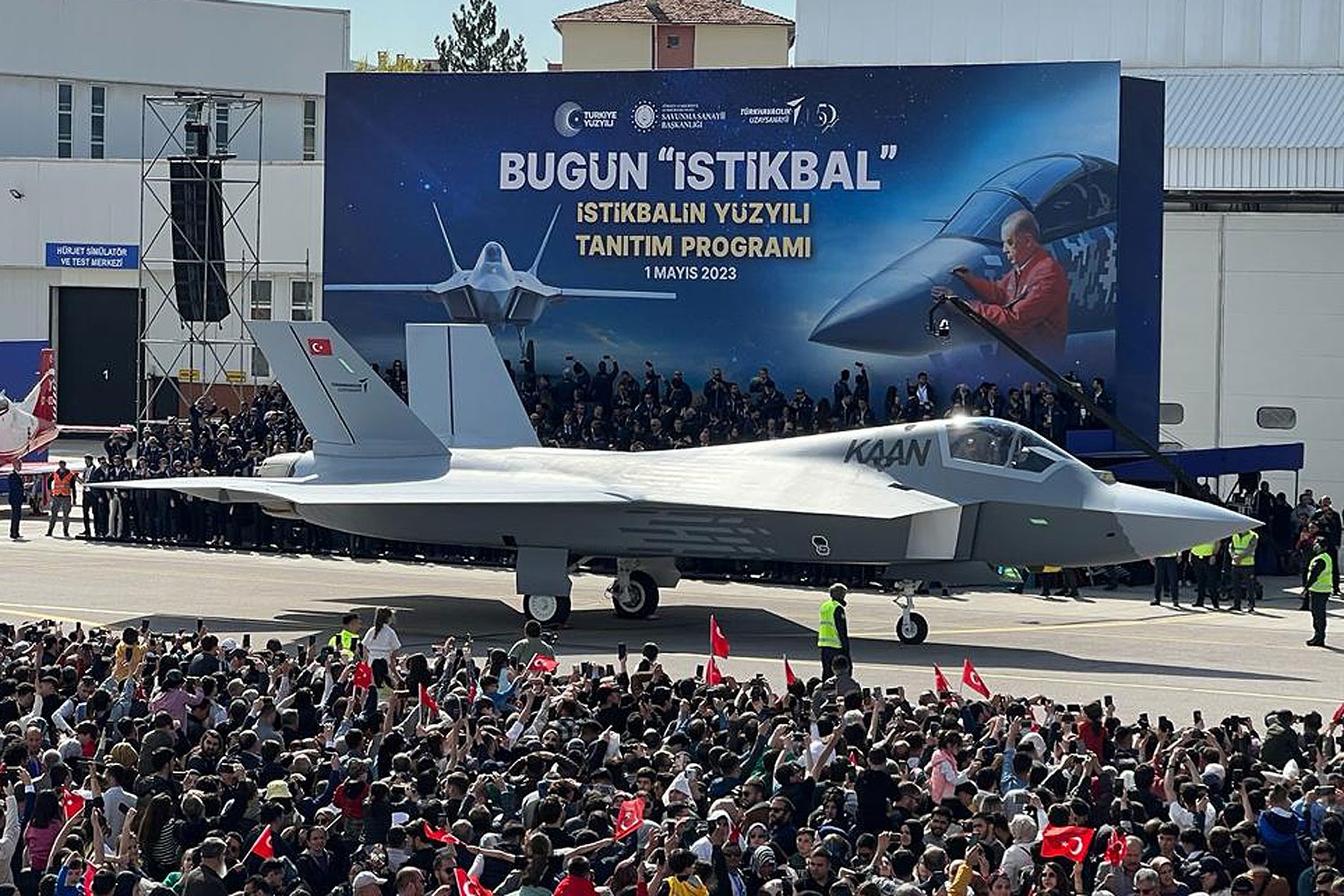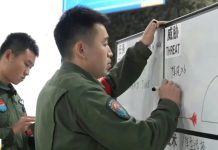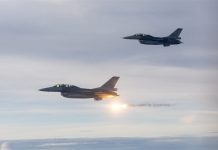Thailand has finally approved the acquisition of four SAAB Gripen-E/F fighter jets as it modernizes its aging air force amid rising security threats, as seen in the recent border conflict with Cambodia.
What began as skirmishes between the two countries in July 2025 quickly escalated into full-scale firefights, with artillery and gunfire rattling border villages for nearly a week. The conflict lasted for about five days before the two warring sides decided to accept an “immediate and unconditional ceasefire” on July 28.
The Royal Thai Air Force (RTAF) currently operates the Gripen-C/D and the older American F-16 Fighting Falcons. Both aircraft were deployed in combat and used to launch strikes on Cambodian artillery positions.
This marked the combat debut for the Gripens anywhere in the world, 37 years after their first flight.
The conflict, rooted in a century-long border dispute, has raised concerns about further escalation. However, the purchase of Gripen-E/F was decided well in advance of this latest conflict and is not directly influenced by the hostilities with Cambodia.
The Royal Thai Air Force (RTAF) officially announced its decision to buy a dozen Saab Gripen-E fighter jets over the American Lockheed Martin F-16 Block 70/72 aircraft in June. The Gripen-E outperformed the American F-16 Block 70/72 by offering technological and financial advantages that made its offer far more appealing and beneficial to Thailand.
The deal is a part of a long-term plan to acquire all 12 Gripen E/F aircraft by 2035 and integrate them operationally. The newly purchased Gripen-E variant will replace the archaic F-16 A/B and will be integrated into the RTAF alongside the existing SAAB Gripen jets.
Saab describes Gripen-E as “Designed to defeat any adversary. Made for forward-thinking air forces, Gripen E incorporates cutting-edge technologies, the latest systems, sensors, weapons, and pods to ensure combat advantage, delivering air superiority in highly contested environments. Silent networking and total sensor fusion across a tactical air unit to blind and confuse the enemy. One aircraft is active, the others go passive.”

The Swedish manufacturer promises that the aircraft allows the first missile launch opportunity and the first kill. Saab claims its design represents a breakthrough, allowing it to swiftly integrate new hardware and update software applications to adapt to evolving mission requirements. Further, the fighter jet incorporates more prominent air intakes and is powered by the enhanced General Electric F414-GE-39E engine.
It is designed for quick field deployment, especially at remote bases, and can be effectively maintained by a few people.
While Thailand was impressed by the cutting-edge features of the Gripen, it was the large scope of the Swedish deal, particularly the technology transfer, that mainly bore fruit. Lockheed Martin, the manufacturer of the F-16, was a lot more conservative in offering a deal to Thailand, as previously explained in detail by the EurAsian Times.
With a fighter fleet including upgraded F-16s, F-5s, and Gripens, Thailand has been steadily modernising its capabilities with multi-role platforms. That dominance became apparent during the border clashes. Cambodia, with no dedicated fighter jets in its inventory, had little ability to deter or respond to Thailand’s precision air strikes.
This may come as an added impetus to the acquisition.
However, Thailand is not the only country in the Southeast Asian region to go on fighter jet shopping in recent times. Several others, including Indonesia, Malaysia, the Philippines, and Vietnam, are exploring options and looking to sign new deals.
New And Advanced Fighter Jets In SEA
In addition to Thailand, Indonesia has been in the headlines for its intention to acquire new and more advanced combat aircraft.
The Indonesian government recently signed a contract to acquire 48 KAAN fighter jets from Turkey. The agreement covers extensive collaboration in manufacturing, technology transfer, engineering, and includes the establishment of a local aerospace infrastructure.

Indonesia is also co-developing the KF-21 4.5th generation aircraft, along with South Korea, and has a deal for 42 Rafale fighter jets with French Dassault Aviation. It could acquire an additional batch of Rafales from France, as indicated by the letter of intent (LoI) signed by the government recently.
Another Southeast Asian country, Malaysia, is building up its air power amid rising security threats in the South China Sea. On June 17, Royal Malaysian Air Force (RMAF) Chief General Tan Sri Asghar Khan Goriman Khan confirmed that Washington had approved the third-party transfer of up to 33 F/A-18C/D Hornets currently in service with the Kuwaiti Air Force (KAF). In addition to this, the RMAF is also acquiring the South Korean FA-50.
Malaysia launched the MRCA (Multi-Role Combat Aircraft) program to acquire advanced fighter jets that could replace its aging fleet and help enhance Malaysia’s air power with a modern, multi-role fighter jet. This program has remained in limbo for several years. Some unconfirmed reports earlier suggested that Malaysia was interested in Russia’s Su-57 but those rumours have now fizzled out.
The most significant fighter jet acquisition in the region is the purchase of the US F-16 by the Philippines. The United States approved the sale of F-16 fighter jets worth US$5.58 billion to the Philippines in April as Manila builds capability to deter an increasingly aggressive China in the South China Sea. The Philippines Air Force (PAF), like its Thai counterpart, had earlier been examining two combat aircraft on offer, the Lockheed Martin F-16 Block 70/72 and the Saab Gripen-E.
The upgrade of the PAF would be essential for enhancing the Philippines’ ability to project power beyond its territorial waters. In addition to a new multi-role fighter, the country is also considering purchasing a dozen additional FA-50 fighters from South Korea to increase its numbers and boost readiness.
Meanwhile, Vietnam has reportedly been discussing a potential purchase of two dozen F-16s from the United States, in what is being interpreted as a break in the country’s strategic alignment with Russia.
The move is aimed at deterring China, which claims almost the entire South China Sea, has several territorial disputes in the region, and has been steadily expanding its military influence in the region.
Though unconfirmed, the reports suggest that Vietnam has been on the lookout for an alternative to its retired MiG-21, the Soviet-designed supersonic jet fighter and interceptor aircraft. There is no information on which F-16 is being negotiated and whether it would be a new aircraft or a used one.
The war-torn country of Myanmar has also made a significant acquisition. In January 2025, the Myanmar Air Force took delivery of its six Su-30 SMEs from Russia.
The six Russian jets were acquired under a 2018 contract valued at US$400 million. The acquisition has been financed through a Russian loan, and the final two fighter jets were commissioned on December 15, 2024, at Meiktila Air Base in Mandalay.
These Su-30 jets will serve as Myanmar’s primary aircraft for safeguarding territorial integrity and countering terror threats, and are stationed at Naypyidaw Air Base, enabling coverage of the entire country.
The Myanmar Junta is strengthening its air capabilities to deal with the rebels. On December 15 alone, the military commissioned six Russian-made Mi-17 helicopters, six Chinese-made FTC-2000G fighter jets, one K-8W fighter jet, and one Y-8 support aircraft, as earlier reported by the EurAsian Times.
Though attention has largely been focused on the turbulence and military build-up in Asia, the above-listed acquisitions suggest that Southeast Asia is evolving and going through a catharsis of its own as new security threats emerge and existing threats become bigger and more pronounced
- Contact the author at sakshi.tiwari9555 (at) gmail.com
- Follow EurAsian Times on Google News




